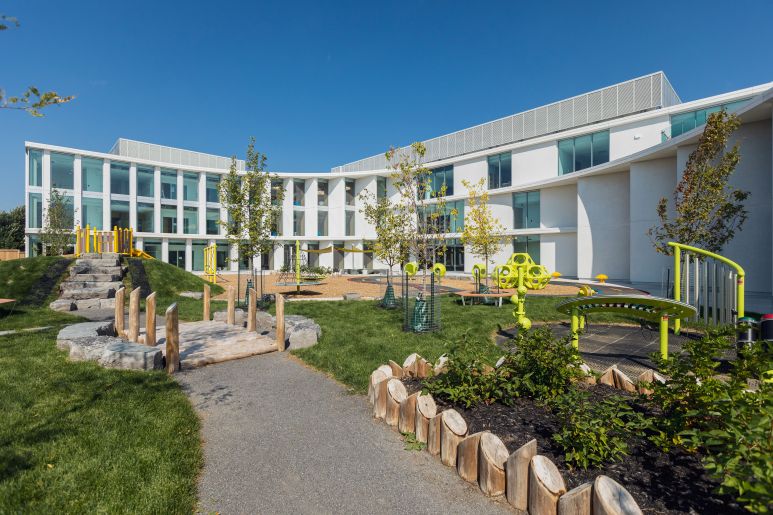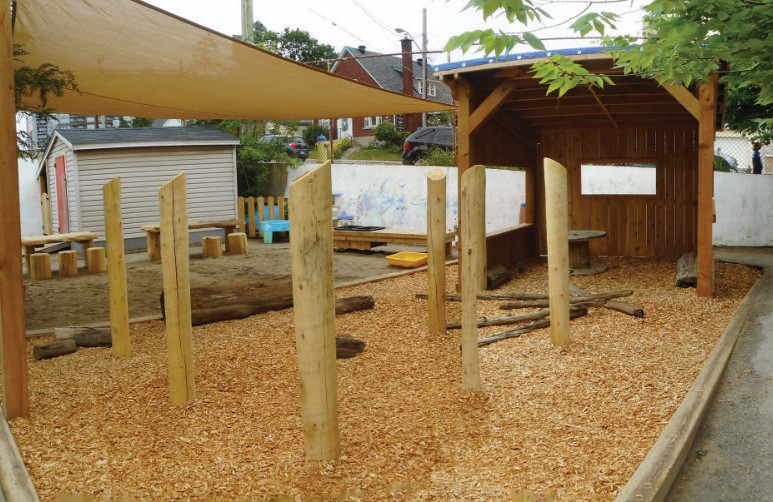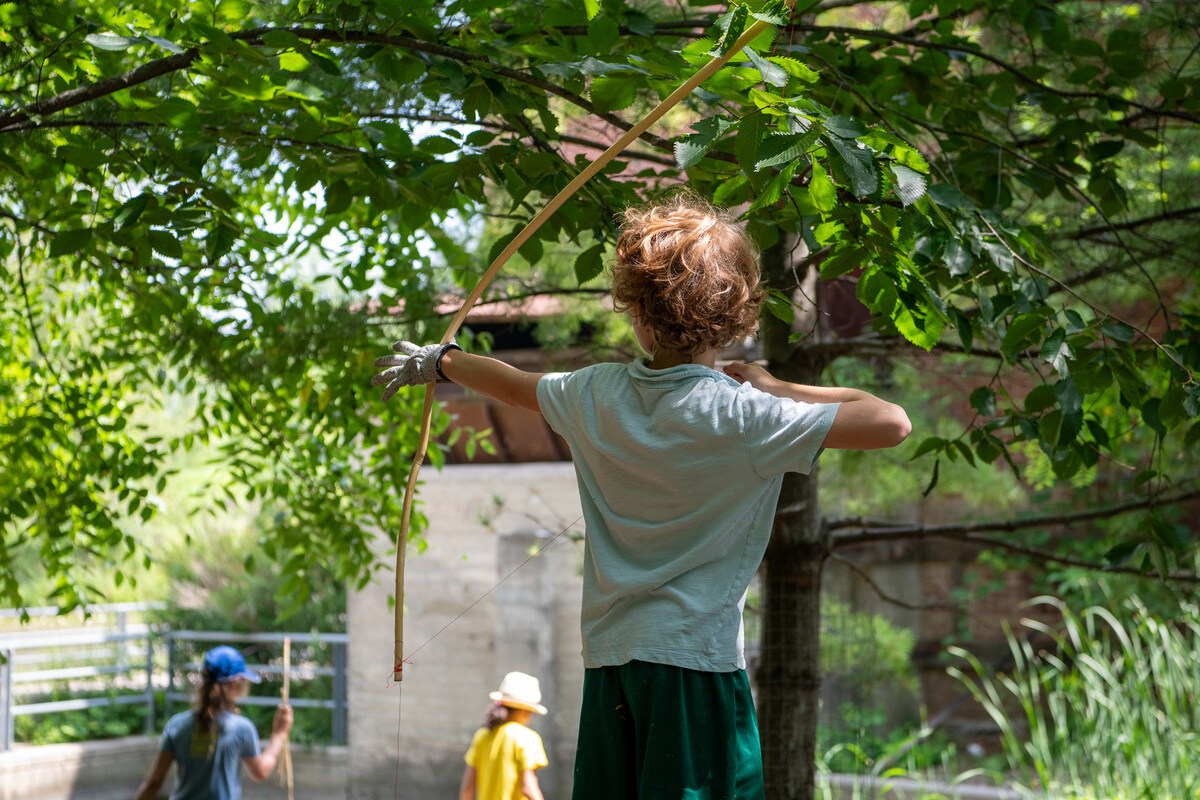CP: What advice would you give to someone looking to redesign their schoolyard, daycare centre or children’s playground?
AH: First, listen to the students! Observe how they play. Participatory design is very important. You don’t want to build a playground that won’t be used by children.
In our experience, many people, both children and adults, tend not to really think about their needs and desires. They get carried away by Instagram images and want what they see, without really thinking about their real needs and what’s really important for their community. I think the role of designers in the consultation process is to dig deep, to have thoughtful conversations about what kids want to do.
So I always ask the kids: what do you want to do? Do you want to jump? Do you want to run? Do you want to play in the mud? You have to think about what they want to do, stick to actions, before developing the design too much, and before choosing equipment.
I consider children to be my main client, but I always want to talk to parents or guardians to explain this participatory design process. There’s a phrase I use a lot: as safe as necessary, as fun as possible, with play value. I try to motivate parents to get involved in the project on the substantive side, in the landscaping work and in watering the plants during the summer, which is very important.

Photo credit : Giant Steps
CP: How do you prioritize accessibility when designing playgrounds? Is participatory design essential in this respect, or do you also have a set of principles related to accessibility and safety?
AH: While I’m convinced that participatory design should play an important role in making spaces accessible, the reality is that regulations and standards are the driving force. Standards can be a good framework, but they’re not necessarily specific.
For example, if I’m working for a daycare centre with an existing courtyard, I first ask to observe the children in the courtyard to see how they use the space. I also identify the negative elements of the playground. Often, regulations can limit what changes are permitted, there isn’t enough shade and the surface is asphalt. When you’re on asphalt, it’s at least 15 to 20 degrees warmer than on grass. Occasionally I take a thermometer with me to show my clients how hot it is on an asphalt surface. In my projects, I try to introduce shade with trees or play equipment that also offer shade, such as shade sails. Shade is an important element of inclusion, because some people aren’t able to regulate their internal temperature, and children will continue to play even in 45-degree weather. There are many resources out there that provide recommendations, but typically standards and regulations do not address safety and accessibility as it relates to environmental and climatic conditions.
I’m convinced that it’s important to offer children challenges, opportunities for play, even risks in play. I’m not talking about dangers when I talk about risks. There are dangers like heat that children are not aware of. We have a duty to children to provide safe spaces, so we have to prevent these heat islands.

Photo credit : Andrew Harvey
CP: As we’re talking about heat islands, can you tell us to what extent your work focuses on the climate resilience of playgrounds?
AH: I always encourage my clients to mitigate the effects of heat islands, create shade with trees, have permeable surfaces and take advantage of existing site conditions that are ecologically beneficial.
School and daycare yards are usually 40% asphalt and the rest is grass. Here in Eastern Ontario, we have a lot of clay in our soils. Twice a day, at recess, hundreds of students—I’d say more like hundreds of little elephants—trample the yard, compacting the clay surface and contributing to drainage and pooling problems.
Pooling is a challenge that requires a lot of aeration, grading and drainage to be added to existing yards. When a landscape designer can intervene before the school is built, it’s simpler, but most of the time, we’re called upon to intervene after the school has been open for ten years or more. So flooding problems have to be taken into account before the playground is built.
To improve drainage, you can add plants and trees that will absorb water. We need to choose plants that will thrive in places that get too much or too little sun, and that are far from where snow will be dumped in winter, so that they do not get damaged by plows and buried in snow banks. When choosing vegetation, we also have to pay close attention to the toxicity of plants for children. We want to choose vegetation that offers opportunities for play, experimentation and learning, but without danger. We have to consider both the safety of the children and the ecological value of the site.
CP: What would you like to see in the future when designing outdoor spaces for our children?
AH: I don’t think we should assist children’s play; for example, we should let them climb on their own. Children should be encouraged to judge for themselves whether there’s a risk or not, and whether they’re capable of taking that risk or not. I think it’s essential to let children experiment and learn. That’s why I’d like to see users [children] involved in all aspects of the project.
I’d like to see more water, even fire, wildlife where possible, in our playgrounds to offer more challenges, more experimentation and more play opportunities for children.
Learn more
Incorporating natural elements into a playground not only enhances the aesthetic appeal of the area but also offers sensory experiences and can help children develop a deeper connection with their environment. If we can build a bond between children and their local environment, they will be more involved in their communities and in protecting the environment. Visit us at the Children’s Garden at Evergreen Brick Works to see how we’re putting these ideas into action
This idea applies to climate ready schools. Thanks to participatory design and innovations in design and construction, climate-ready schools offer a range of benefits for students, communities and the environment. Find out more about Canada’s first climate ready school and how student involvement influenced its design.







